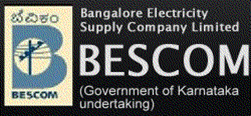HOT TOPICS
SPOTLIGHT AGENCIES
Government Education in Bangalore
Written By gowriv - 25 June, 2008
Civic amenities Bangalore governance education Schools amenities
At times it seems that Bangalore citizens have forgotten that their government schools exist.
More than half of the schools in Bangalore are private unaided schools, while in the entire state of Karnataka, 81% of schools are government schools. Government schools are seen as a school of last resort, and face high dropout. Children who do survive government schooling often end up without basic skills -- reading, writing, and arithmetic. Still, there are more than 200,000 children attending government schools in our city.
By initiating the Karnataka Learning Partnership (www.klp.org.in), the Akshara Foundation (www.aksharafoundation.org) is trying to get more citizens informed about government schools and how they can help. See our blog (http://blog.klp.org.in) for more details.
My question here is: What would citizens like you need to be inspired to help make government schools better? What support would you need? What would you need to know? How can we help get internet-savvy people in Bangalore out there helping in schools and advocating for change?
COMMENTS

Sarva Shiksha Abhiyan of the Govt.
City.Zen - 9 July, 2008 - 00:34

An excellent point - "advocating for change"
silkboard - 26 June, 2008 - 05:45
Gowri, thanks for this excellent post.
I have a conflict running in my mind. One thing I am often told is - charity never scales. When trying to help with issues like these, what should be the role of active citizens? "become a traffic warden" if you are so driven about traffic - can this scale, or is this right?
While I am nobody to belittle those who volunteer to do things (traffic wardens, or volunteer teachers). But primary education is a prime area of social responsibility local governments have. Pushing them to increase allocations in this area, making them divulge how they spend currently allocated amounts, and how they monitor the effects of their spending - do you think this type of help will go a longer distance?
Questioning and pushing and helping those who are "supposed" to do the job - I think this approach will bring us more results.
On the other hand volunteering activities bring quick results and satisfaction, how much ever small the area of impact may be. This is the other side of the conflict that runs on my, and I am sure many other people's minds.
Welcome to Praja.

idontspam - 26 June, 2008 - 09:07
Quick win
One area where we can help is coming up with checklist to rate the schools and have a praja rating system for the best run govt school in the state (start with BLR) which will be validated and approved by govt/experts. Praja volunteers and working groups can participate in the annual rating exercise with the help of the education dept.
Medium term plan
First, Set up a working group to collect all opinions, ideas, earlier reports & studies done on the methods to improve govt school system. Second, Define the desired state for these schools. Third, brainstorm the methods and expenses and put up a timebound roadmap to take these schools to excellence. Implementing them and monitoring them has to be done by a govt. authority.

Does everything have to scale?
s_yajaman - 26 June, 2008 - 09:14
SB,
I personally feel that this scaling question reflects a business mindset. It is now almost a holy cow! If something is worth doing, it needs to be scalable! I am not so sure.
I am more of a "It is better to light a single candle than to curse the darkness". I will give you an example from Madras. Apparently,homemakers in one part of Adyar organize "homework" sessions for poorer children. They all turn up to the locality, get a glass of milk and a snack, do their homework and then go back home. Is this scalabale? I don't know. Does it make a difference. I think so.
It does not have to be an all or nothing approach. If each of us enables one child to access education in some way, that is good enough.

The talk of scale and collaboration
silkboard - 27 June, 2008 - 05:09
Srivathsa, Gowri, I didn't say I buy that talk of 'scale'. I merely expressed a personal dilemma. The way I think of it, scale is the wrong word. The right word is impact. Anything that can make a lasting impact or cause change, local or large scale is welcome. Forget that, anyone wanting to do any volunteering, without bothering about impact etc and over analyzing things - nobody should belittle that. Gowri/Navshot, liked the way you talked about "making it fit in the big picture".
Gowri, I am sure many of us will be interested. But not sure how many will realistically be willing to commit regular time (that is where all the problem begins, and number of volunteers dwindle - I have a family, I am abroad, I can only do Saturday evenings, can't commit to a time of week as work keeps me busy etc etc). How about this:
- We set up a voluntary teaching calendar here. Along with it, there will be detailed course material (what needs to be taught/covered, which school). And then, a group of people can combine (by sharing the teaching work) to make sure at least someone takes the classes on a given day. This sort of collaboration could get us more volunteer teachers.
- Do you want to move your school blogs here? Together we attract more people, and the online-driven volunteer program to go with it can get more folks interested.
- And to go with all this, with time, we will track/watch Bangalore's primary education initiatives (under Sarva Shiksha Abhiyaan or other) and can try to 'lobby' for things with right people.
Be sure that I am only thinking of ways to help you extend your reach. To me, Praja's philosophy is that there are a lot of people with energy, but they don't get the right outlets. On the other hand, lots of organizations like yours do nice and noble things, but your deeds may not be known to as many.
Can talk more over email (just sent you one), but can talk openly via comments here as well. Your pick.
PRAJA.IN COMMENT GUIDELINES
Posting Guidelines apply for comments as well. No foul language, hate mongering or personal attacks. If criticizing third person or an authority, you must be fact based, as constructive as possible, and use gentle words. Avoid going off-topic no matter how nice your comment is. Moderators reserve the right to either edit or simply delete comments that don't meet these guidelines. If you are nice enough to realize you violated the guidelines, please save Moderators some time by editing and fixing yourself. Thanks!





